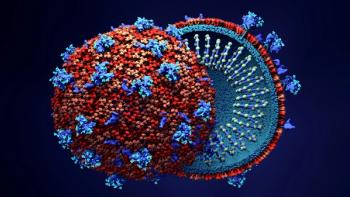
New Trial Shows a Cure for HIV May be Possible
A small trial that combined the anticancer drug Zolinza with an immunotherapy had a modest impact on antiviral activity in patients with HIV. Researchers are hoping better approaches can be found to coax HIV out of hiding.
The cancer drug Zolinza (vorinostat) along with an immunotherapy has been shown in a small trial to bring HIV-infected cells out of latency, opening up the possibility that one day therapies could be developed that cured people of the virus that leads to AIDS. The study,
In this study, researchers from the University of North Carolina (UNC) School of Medicine, treated nine patients with Zolinza, which is used to treat patients with T-cell lymphoma, as well as two different doses of an immunotherapy that was developed from patients’ own immune cells. Zolinza was chosen because it works by inhibiting the enzyme histone deacetylase, which plays an important role in the cell cycle in cancer. Drugs that target histone deacetylase are able to induce cell death. Zolinza is a Merck drug first approved in 2006.
The immunotherapy was provided by a team led by Catherine Bollard, M.D., at the George Washington University. Patients’ white blood cells were extracted and expanded by her group to help in their ability to attack HIV-infected cells. These expanded cells were then given to patients in the study at UNC. The study enrolled patients who had been taking antiretrovirals for a median of eight years.
Researchers at UNC — led by Cynthia Gay, M.D., MPH, associate professor of infectious diseases, and David Margolis, M.D., the Sarah Kenan Distinguished Professor of Medicine, Microbiology & Immunology, and Epidemiology — found that the combination of Zolinza and the higher dose of the enhanced immune cells was well tolerated. Adverse events were mostly grade 1 and no patient had to have doses lowered.
The combination had a modest impact on antiviral activity, but the effect was not sustained long-term. The researchers concluded that more work needs to be done to bring HIV cells out of latency achieve full clearance of the disease.
“We did show that this approach can reduce the reservoir, but the reductions were not nearly large enough, and statistically speaking were what we call a 'trend' but not highly statistically significant,” Margolis said in a
Researchers are are working on improving both latency reversal and the clearance of infected cells. “We hope to do more studies as soon as we can, using newer and better approaches," Margolis said.
Newsletter
Get the latest industry news, event updates, and more from Managed healthcare Executive.




















































